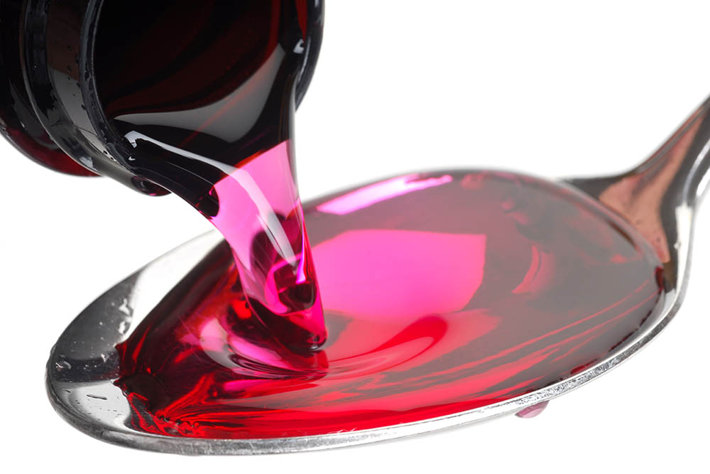Effects of Codeine Abuse

Whether codeine is used properly or it is abused, it has many of the same effects as other opiates. Codeine may cause nausea, vomiting, and drowsiness. Since opiates suppress breathing, the codeine user may have slowed breathing or difficulty getting his breath. This is the way an opiate kills if a little too much of the drug is taken. With codeine, not much more of the drug needs to be taken for an overdose than one would normally take for treatment of pain.
When a person is using codeine for cough suppression instead of for pain, usually a smaller dose is consumed. Either way, another common effect of codeine use is addiction. How long it takes to get addicted will vary by person. Some people may be addicted after only a couple of weeks. Another person may take codeine for a longer time and still be able to stop.
Like other opiates, codeine also has an itchy, sedating effect. A codeine user may be drowsy, especially if he (or she) is using a high dosage or is abusing the drug. His heart rate will slow down, which can lead to fainting or dizziness. Its mental effects could include confusion, irritation, antagonism or agitation. If effects or dosage are more intense, there could be hallucinations or even convulsions.
Opiate users are very often constipated which means they may seek laxatives. In the past, codeine and other opiates were used to remedy diarrhea but this is seldom done any longer as there are other solutions that would not lead to addiction.
Unfortunately, Addiction and Use of Other Opiates is Another Effect
Codeine may not seem to be a serious threat as it is less addictive than oxycontin, hydrocodone, oxymorphone or heroin. Still, a person who abuses codeine is very likely to progress to stronger opiates. After a period of abuse, there is usually little euphoric effect to opiates. The person who is abusing them once the euphoric effect is gone is normally just trying to feel functional each day and keep withdrawal sickness away. Progressing to hydrocodone or oxycodone could provide the rush of euphoria they are missing - for a little while at least. But then they will be in the same rut of just needing the drug to stay functional.

Codeine appears in dozens of different formulations. A person could be abusing codeine without even knowing it.
These prescription-only formulations include these brand names:
- Fioricet with codeine, Phrenillin with caffeine and codeine
- Cotabflu
- Colrex Compound
- Tylenol with Codeine #3, and others
- Phenflu CD
- Maxiflu CD
- Florinal with Codeine
- Soma Compound with Codeine (for muscle pain)
- Empirin with Codeine
- Nalex AC
- M-End PE, Poly-Tussin AC
- Mar-cof BP (also contains pseudoephedrine)
- Notuss-NX
- CapCof
- T-Koff
- Pediatuss
These are just a few of the many formulations with codeine. As can be seen in the names, many are for colds, coughs or flu. Some are for pain. One also contains carisoprodol or Soma, which would relax muscles for additional relief of pain stemming from structural injury. But Soma is itself addictive, adding another layer of danger for the person who is just seeking relief.
True Relief Means Sobriety
For the person who has not been able to walk away from codeine or other opiate addiction, perhaps for years, what is needed is a drug rehab program that provides lasting sobriety. Not just sobriety for the term of the rehab, which in so many cases is just 28 days, but for the rest of one’s life.
The Narconon program is a precise, step-by-step regimen that addresses key aspects of addiction to assist individuals to overcome its adverse effects for themselves and those around them.
The Narconon recovery program is structured so that the individual has tools that help him succeed in life and remain drug-free.
The Narconon program, available in more than 20 centers across the US and around the world, takes ten to twelve weeks to complete, on average.
One of the innovative steps that bring about a higher success rate is the Narconon New Life Detoxification. This is one phase of the overall recovery program and it provides an effective approach to lowering or even eliminating cravings. Each person follows a strict regimen of nutritional supplements designed to help the body flush out old stored drug toxins. The person exercises moderately and spends time in a sauna. The body is helped to flush out these old toxins stored in fatty tissues, which have been contributing to the triggering of cravings. When this action is done, those who have gone through it describe their improved outlooks, increased energy, and lower cravings.
Once cravings are under control or eliminated, then a person in recovery has a much better position from which to learn how to build that sober life.
The later steps of the recovery program give the individual tools he needs to remain drug-free. He learns how poor decisions regarding friends and acquaintances damaged his life in the past and how to make better choices in the future. He also learns how personal values are lost and how to restore them. One becomes able to leave the past behind and move forward into a positive future.
The goal of the program is a drug-free individual.
Find out all about the Narconon drug recovery program.
See also: Signs and Symptoms of Codeine Abuse
Resources:
 ®
®